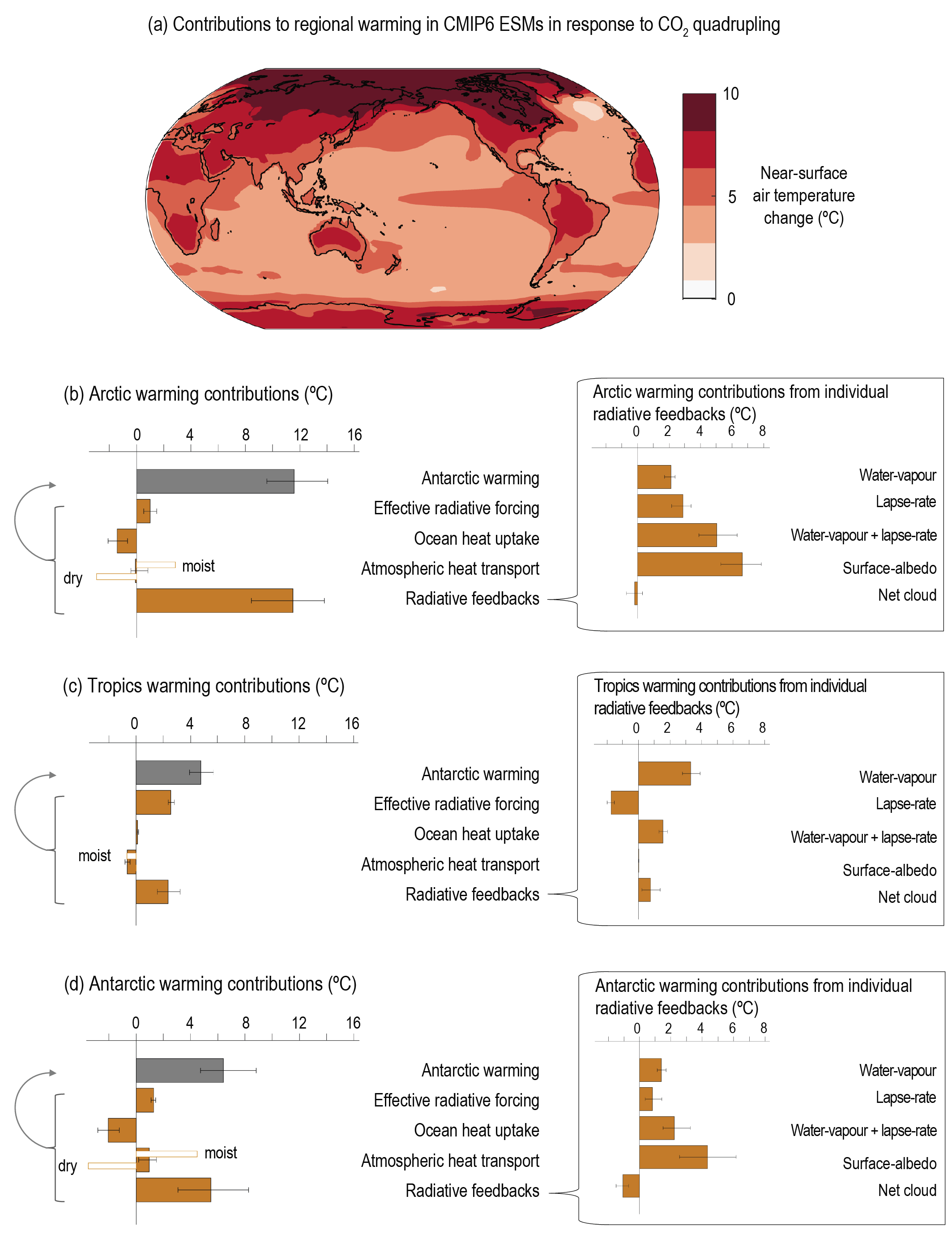Back chapter figures
Figure 7.12
Figure caption
Figure 7.12 | Contributions of effective radiative forcing, ocean heat uptake, atmospheric heat transport, and radiative feedbacks to regional surface temperature changes at year 100 of abrupt 4xCO2 simulations of CMIP6 Earth system models (ESMs). Figure 7.12: (a) Pattern of near-surface air temperature change. (b–d) Contributions to net Arctic (>60°N), tropical (30°S–30°N), and Antarctic (<60°S) warming calculated by dividing regional-average energy inputs by the magnitude of the regional-average Planck response. The contributions from radiative forcing, changes in moist, dry-static, and total atmospheric energy transport, ocean heat uptake, and radiative feedbacks (orange bars) all sum to the value of net warming (grey bar). Inset shows regional warming contributions associated with individual feedbacks, all summing to the total feedback contribution. Uncertainties (represented by black whiskers) show the interquartile range (25th and 75th percentiles) across models. The warming contributions (units of °C) for each process are diagnosed by calculating the energy flux (units of W m–2) that each process contributes to the atmosphere over a given region, either at the top-of-atmosphere or surface, then dividing that energy flux by the magnitude of the regional Planck response (around 3.2 W m–2°C–1but varying with region). By construction, the individual warming contributions sum to the total warming in each region. Radiative kernel methods (Section 7.4.1) are used to decompose the net energy input from radiative feedbacks into contributions from changes in atmospheric water vapour, lapse rate, clouds, and surface albedo (Zelinka et al. (2020) using the Huang et al. (2017) radiative kernel). The CMIP6 models included are those analysed by Zelinka et al. (2020) and the warming contribution analysis is based on that of Goosse et al. (2018). Further details on data sources and processing are available in the chapter data table (Table 7.SM.14).
